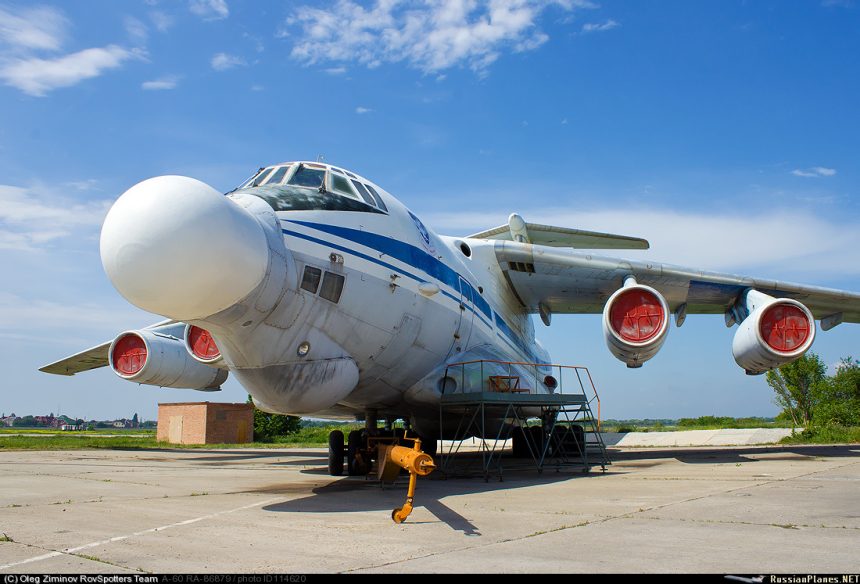Unlike the now-scrapped US airborne counter-ballistic laser project, Russian airborne laser system is still alive. Although based on a 35 year-old design dating back to the Soviet era…
The Russian airborne laser program dates back to the end of the 1970s when initial plans were made to use a laser-equipped aircraft for testing.
The first test-bed aircraft was a Beriev A-60, a modified Il-76 transport plane that made its first flight in 1981 and was equipped as a flying laboratory in 1983. Another A-60 joined the program in 1991.
Little is known about the achievements of the two A-60s until the early 2000s. Reportedly, in 2003 the project was revived under the name of “Sokol-Eshelon”. In 2009, the 1LK222 laser system developed from the original A-60 program, whose purpose is to blind the sensors of enemy satellites rather than destroy them, was used in a test to lluminate a Japanese satellite which was at an orbital height of 1,500 km.
In 2012 RT reported that the laser would be installed on the only surviving A-60 test-bed (with its characteristic special nose cone with a laser targeting system) that was going to be refurbished and upgraded.
According to the Russian MoD, the A-60 Sokol-Eshelon has eventually completed the ground testing in the new configuration and is ready for flying testing decades after it first flew as a laser-equipped platform.
Cool.
The A-60 project bears resemblance with the American airborne laser project that was based on the YAL-1 Airborne Laser Test Bed (ALTB). The main difference is that the U.S. project aimed at ballistic missiles interception in the atmosphere whereas the Russian project is designed for “space counter warfare”.
The YAL-1 Airborne Laser Test Bed (ALTB), that flew for the last time on Feb. 14, 2012, was a modified Boeing 747-400 Freighter (serialled 00-0001/ED) that housed two solid-state lasers and a megawatt-class chemical oxygen iodine laser that was intended to direct energy to intercept and destroy enemy ballistic missiles.
The ABL was designed to identify, track and intercept enemy ballistic missiles shortly after missile launch, operating at altitudes above the clouds to locate and track missiles in their boost flight phase, and then accurately point and fire the high-energy laser to intercept enemy missiles near their launch areas.
Although the YAL-1 achieved good results during testing, proving its ability to destroy threat-representative ballistic missiles, a laser up to 30 times more powerful than the chemical laser aboard the test bed was needed to shoot down, from distance, a real enemy missile in the boost phase. For this reason, funding was cut in 2010 and the program cancelled in December 2011.
Actually, airborne laser testing has not ceased since then as proved by NOTAMs (Notice to Airmen) issued back in 2012. Moreover, laser-based cannons (and other laser weapons) might equip U.S. Air Force planes by 2030.
Image credit: Oleg Ziminov / Russianplanes.net
















